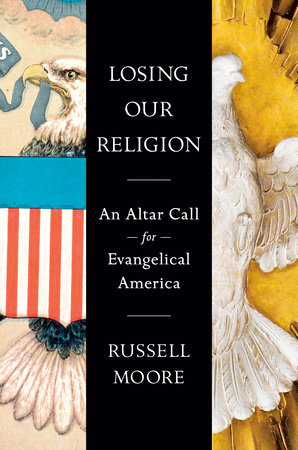It still had that smell, like a mixture of new carpet and old lady.
Maria and I looked at each other as we stood in this familiar foyer. It was the first place we’d ever seen each other—standing right here, as I ran in from the rain and she was folding up a drenched umbrella. I’d walked in this door thousands of times. My parents carried me in these doors a few weeks after my birth. I’d walked through them every Sunday morning of my childhood, with a Bible and an offering envelope in hand. Every summer I marched through these doors—carrying a flag or a Bible for the round of Vacation Bible School pledges, the closest things we had to a liturgy or a calendar of the Christian year. I looked at the window, right next to the big glass doors. That was the one the preacher’s son had smashed with a rock, and we’d all scattered, knowing he was going to get it. This was my home church. It’d been a long time since we’d walked into this foyer, and now we had two little hands gripping our fingers.
Our boys had, I’m sure, no idea how big a deal it was for us to have them here with us. To them, it was just another church somewhere. But to me, it was everything.
For most churches, adoption isn’t a priority, and this isn’t because the church members are anti-adoption. It’s because adoption seems strange to some of them, and irrelevant to others. It becomes a focus only when a church member personally faces infertility, or knows of particular children without parents. Until then, for most of us, adoption rarely crosses our minds.
That’s why the first step to an adoption-friendly church must be the pulpit. That seems obvious, but it’s less obvious than it seems. By saying that pastors should preach on adoption, I am not speaking primarily of “raising awareness” about adoption, in the same way a high school principal can “raise awareness” in a speech about a fundraising drive for the new football stadium. Preaching isn’t simply a conveyance of information. The act of preaching then carries with it, if it is biblically faithful gospel preaching, the authority of Jesus himself. That’s the difference between the act of preaching and the act of lecture-delivery—the difference between “Thus saith the Lord” and “It seems to me.”
The preacher, moreover, should preach on adoption with specificity. The pastor doesn’t know exactly how an adoption priority works itself out in each individual life or family, but he can further the cause by provoking questions. He can ask, for instance, in a message on poverty or the sanctity of human life, whether God might be calling some in the congregation that day to adopt, whether God is calling someone to give money to fund an adoption. He can call on his people to pray for how God would have them to serve the fatherless, followed by information on how they can carry out whatever commitment God lays on their hearts with contact information about groups within the church able to help.
Pastors and church leaders can also create a priority for adoption by highlighting adoptions within the church. This isn’t a way to “commend” the adopting parents, but rather to make adoption seem less “strange” to the rest of the congregation. In almost any given church service, there are those who would start to think about whether they should adopt if they just see someone who has done it. When people see and know children who’ve been adopted, suddenly the reality isn’t abstract to them. When they hear the word “orphan,” they stop thinking of a sad face in a movie and start thinking of “Caleb” or “Chloe” who sits in the pew in front of them.
Some churches have a time of “baby dedication” or “parent and child dedication” in which they pray for new arrivals within the congregation. Some congregations are of such a massive size, that this kind of once-a-year celebration is all that’s practical. For other churches, though, there could be a time at the end of the service whenever a baby is born or a child adopted by a family within the church. This could take as little as three or four minutes with recognition and a prayer of thanksgiving. In larger churches, this could even be done via video. The point would be to counter the culture’s growing utilitarian view of children, to welcome children as blessings from God, and to encourage families to consider adopting orphans into their homes.
A pastor-hero of mine used to conclude every baptism by standing in the baptistery, dipping his hands in the water and announcing, “And yet there is room for more.” It was his way of inviting those listening to come into the fellowship of Christ without delay. A pastor could have great effect if he held a time of prayer for adopting families, followed by the statement to his people, “And yet there are more children out there who need godly parents.”
Another key aspect of local church ministry toward adoption is that of economic stewardship. If the apostles remind even Paul himself to “remember the poor” (Gal 2:10), then surely the rest of us need such a reminder. The pastor could stand up and say, “We have an unnamed couple in our congregation that’s praying for the money it will take to adopt a child, I wonder if the Lord’s calling anyone in here to help make this happen?” Churches can further this along by allowing givers to do so anonymously, knowing they’ll be rewarded in full at the Judgment Seat.
Pastors can encourage adoption also as they continually emphasize the sanctity of human life, including the lives of the disabled, the “illegitimate,” and the unborn. Some of the women in your congregation are vulnerable to the abortionist’s propaganda precisely because she feels she’ll lose her church if church people know about the shame of her pregnancy. Speak to this woman from the pulpit—and to her husband or boyfriend or father. Speak directly to the abortionist, who may have slipped in the back door or may come across a recording of the message. Speak directly of the horror of the judgment to come for those who shed innocent blood. But speak also directly that judgment has fallen on the quivering body of a crucified Jesus. Warn of hell, but offer mercy—mercy not only at the Judgment Seat but mercy in the cell groups and hallways of your church.
Your congregation can encourage and equip the adoption of infants and children. Your church can preach the gospel, and care for the vulnerable. You can provide the funds and the encouragement and the prayer support for untold numbers of Great Commission families. If adoption is to be a priority, it will take congregations mobilizing to do so. After all, it takes more than a village to adopt a child, at least for those of us in Christ. It takes a church.
This article is adapted from the new edition of my book Adopted For Life: The Priority of Adoption For Christian Families and Churches.







